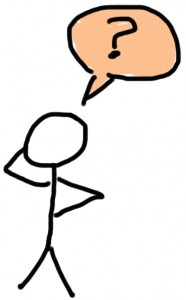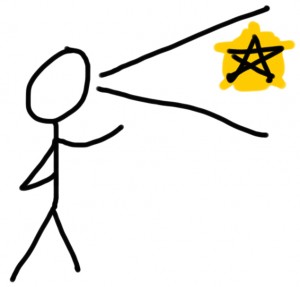In just the last year 7,593 facilitators, coaches, managers, planning team and business owners have accessed these 7 strategic planning process steps. I hope it helps you craft a clear, powerful strategic plan as it has them. Also, see below for Free Strategic Planning Template
Here are the 7 simple steps in the strategic planning process…
How you see strategic planning determines what you get out of it.
You can see it as a boring (but necessary) strategic plan you have to do … Or you can see this process steps as one of the most powerful forces at your fingertips for creating impact and change.
I’ve seen simple changes in business strategy increase an organization’s productivity by 400% in 2-weeks…
I’ve seen it transform the effectiveness, reach and impact of non-profits and government agencies, and local governments.
I’ve watched it grow a start-up from a company struggling to do a million dollars a year into a 10 million dollar business 3 years later…
I’ve seen it double another companies revenue in a single year…
I don’t know of another force that rivals its power to create breakthrough results.
My goal is to give you a simple, step-by-step process to harness the power of strategy for both you and your organization.
The reward for a little time with these planning process steps is profound. It changes organizations and futures.
Whether you are thinking through these steps on your own or leading a team through them, remember strategy has the power to multiply your resources, change the game, and take your organization to the next level.
Here we go:
Step 1 in the Strategic Planning Process: Where Are You Now?

In this step we take a look at the two major drivers of strategic planning: stuff that is happening now or, stuff we think is about to happen to our business. We then get very clear on our current strategic position.
That can be good stuff, but it’s usually bad stuff.
One of the most time-proven tools for answering the question of, “Where are we now?” is the SWOT Analysis. SWOT stands for Strengths and Weaknesses, Opportunities and Threats.

SWOT ANALYSIS
Another great tool to help your team members see external threats and opportunities is the PEST Analysis. PEST stands for Political, Environmental, Social and Economic. This is very helpful of helping you and your team members see beyond your business and industry and become clear on the greater forces that could have an impact on your future.

PEST Analysis Example
So, in step one we get clear on the problems, challenges and future dangers facing your business. And your planning team gets clear on your organization’s core value and core competencies. These play a major role in determining your strategic objectives. Then we narrow them down to those that will create the most impact.
Step 2 In The Strategic Planning Process: What’s The Vision?

While problems and challenges drive the need for strategic thinking, it is vision that drives the rest of the strategy process.
Nothing happens until you have a vision and are clear on your strategic objectives. The more clear and compelling your vision, the more powerful and imaginative your strategy will be.
The vision you craft in this step will act as the “North Star” to the rest of your strategic plan.
Your vision should include tangible targets like revenue goals, market share goals, etc.; as well as intangibles like your mission statement, core values, culture, and purpose. Your vision is your end strategic position.
Step 3 In The Strategic Planning Process: What Are The Obstacles?

To have a vision is to have obstacles. They appear the minute your vision is formed.
Yet, many business leaders have trouble taking a realist’s perspective and looking at big obstacles squarely in the eye.
Looking at, and admitting barriers to your vision does not make you a pessimist. The purpose of looking at obstacles is not to look for excuses and reasons not to pursue the vision. It’s to see what our strategy must overcome so that it can be as effective as possible.
Failure to look at obstacles and adapt your strategy to them creates nasty surprises.
Looking at big scary obstacles realistically gives the imagination the fuel it needs to craft innovative strategies for victory.
Step 4 In The Strategic Planning Process: What are our resources?

Only after you know what the dangers are, what your vision for the future is, and what’s standing in the way are we ready to look at our resources.
We are looking for two major elements: What resources we have to help us achieve our vision, and what resources we need.
Why not do this first – before vision? Won’t a vision be more realistic if we first look to resources?
The truth is a resource often isn’t a resource until a vision gives it meaning and use.
A rock at my campsite isn’t a resource until I discover I forgot a hammer to pound on the tent stakes – or a bear is threatening my life.
In the same way, you’ve got “rocks” lying around your business that you would never think to use until a compelling vision gives them meaning as a resource.
Again, the SWOT Analysis tool is great for helping you identify strategic resources. As yourself or your team, What are our Strengths and Weaknesses, Opportunities and Threats? The PEST analysis is helpful here as well.
Step 5 In The Strategic Planning Process: What’s our strategy?
Defining Your Strategic Objectives.

Strategy exists to serve a vision.
Vision and Resources answer the questions, “Where do we want to go?” and “Where are we now?” Strategy answers the question, “How do we get there?”
This is the heart of the strategic planning process.
During this step, you’ll take a look at your resources, mix in some imagination, and create a path around, under, or over your obstacles to take you to your vision in the fastest way possible.
Step 6 In The Strategic Planning Process: What are our tactics?

Now that we know our major strategic direction, it’s time to get specific with details, time tables and accountabilities. Simply put, your business plan needs an action plan!
Tactics answer the question, “Who’s going to do what by when?”
Ironically, if you, or a member of your team, excels at vision and imagination, this will be the toughest step.
On the other hand, if you are a realist and know all that “dreaming” won’t make anything happen, this will be your favorite step.
Either way, nothing will happen until you complete this step in the strategic thinking process.
It’s time to make something happen!
Step 7 In The Strategic Planning Process: What will we monitor and measure?
In the late 1800’s famed military strategist, Field Marshall Helmuth Carl Bernard von Moltke noted, “No battle plan survives contact with the enemy.”
What’s interesting is that this quote was from a military man who was known to take 1000’s of variables into account when crafting his battle plan.
His point being: Things change. You better adapt to them.
Vision is about the future, and strategy is how to get there. Yet, no person knows the future – nor will any amount of intense research reveal the future.
Therefore we need to constantly monitor our strategy and tactics, making adjustments where necessary to keep us driving towards our vision.
Too often I see business leaders get so locked on a specific strategy or tactic that they fail to realize when it is time to try something different.
Monitoring and measuring the right things is the only way to keep you on track and on time.
It’s Your Future…
Neither you nor I can predict what will happen in the future. But we’ve been given the amazing ability to shape it in ways no one else can imagine.
As Dandridge Cole once said,
“We cannot predict the future, but we can invent it.”
This simple, seven-step process will help you move from today’s challenges and frustrations to a richer future.
[thrive_leads id=’1533′]


Very helpful, simple to understand and relate to.
Thank you.
Vincent.
Thanks Vincent. I hope it serves you well.
thanks for strategy planning processes it has really boast my vision.
Easy to comprehend with friendly examples